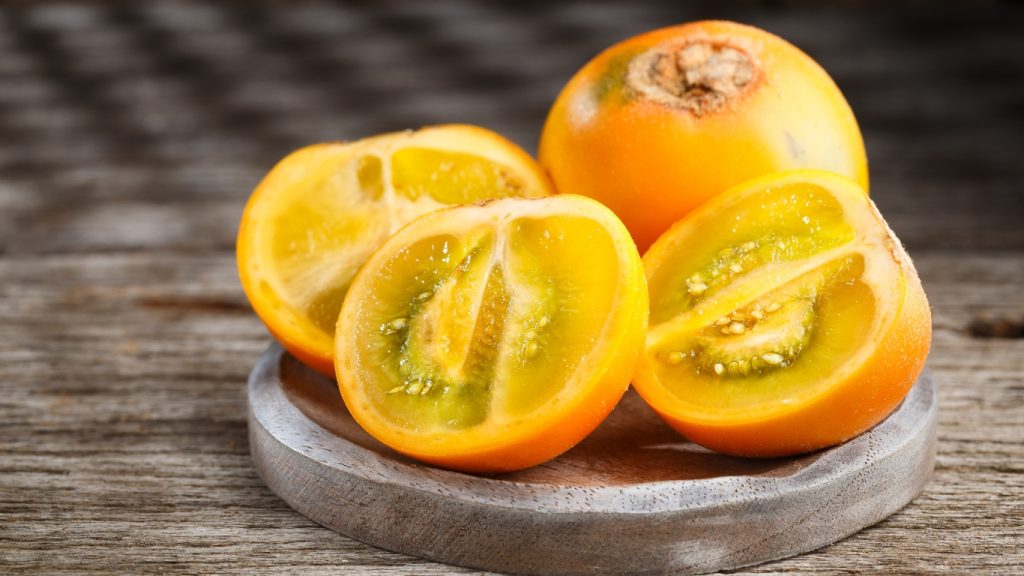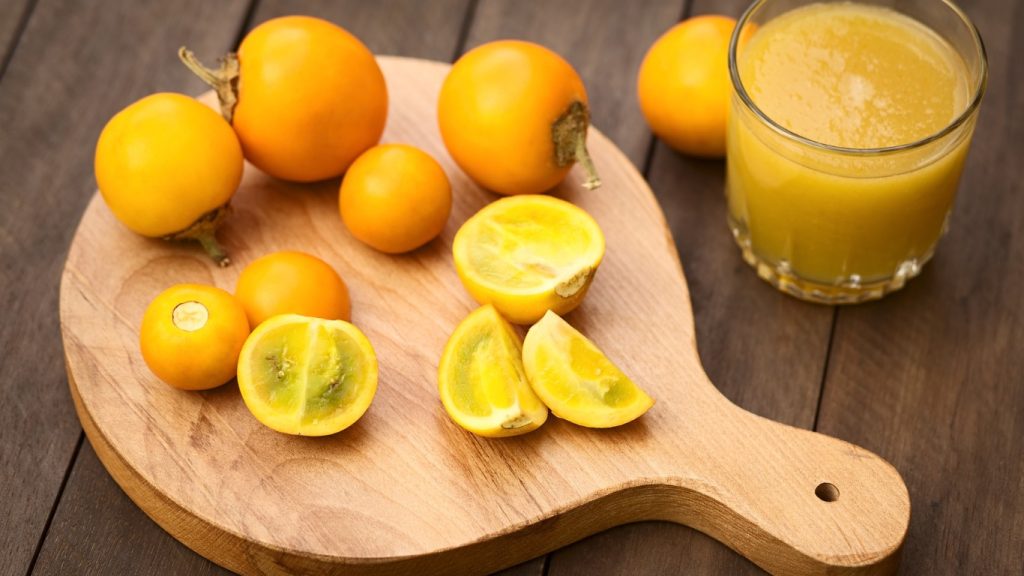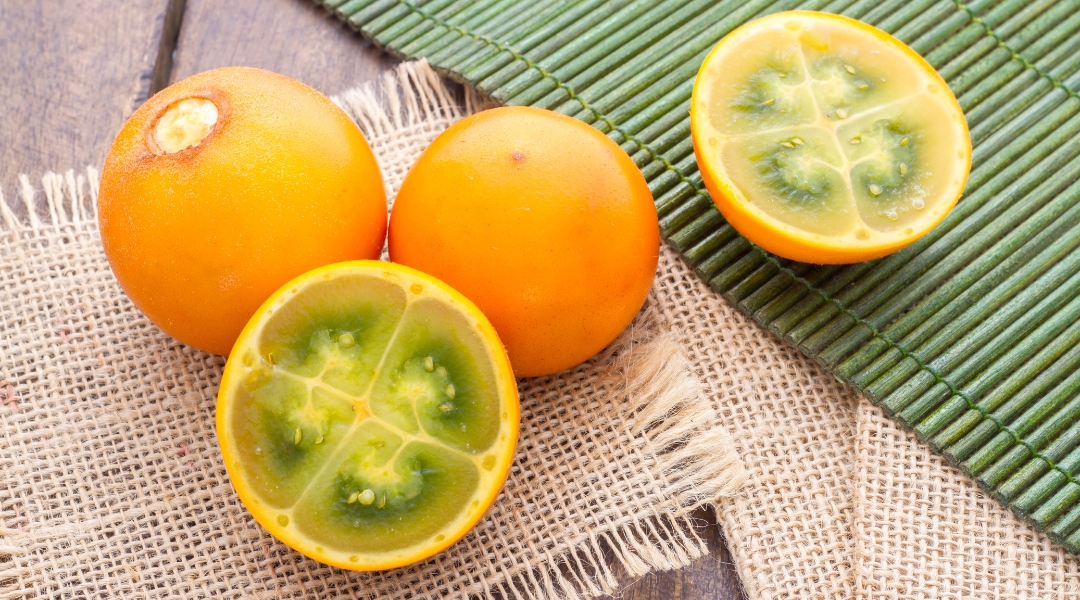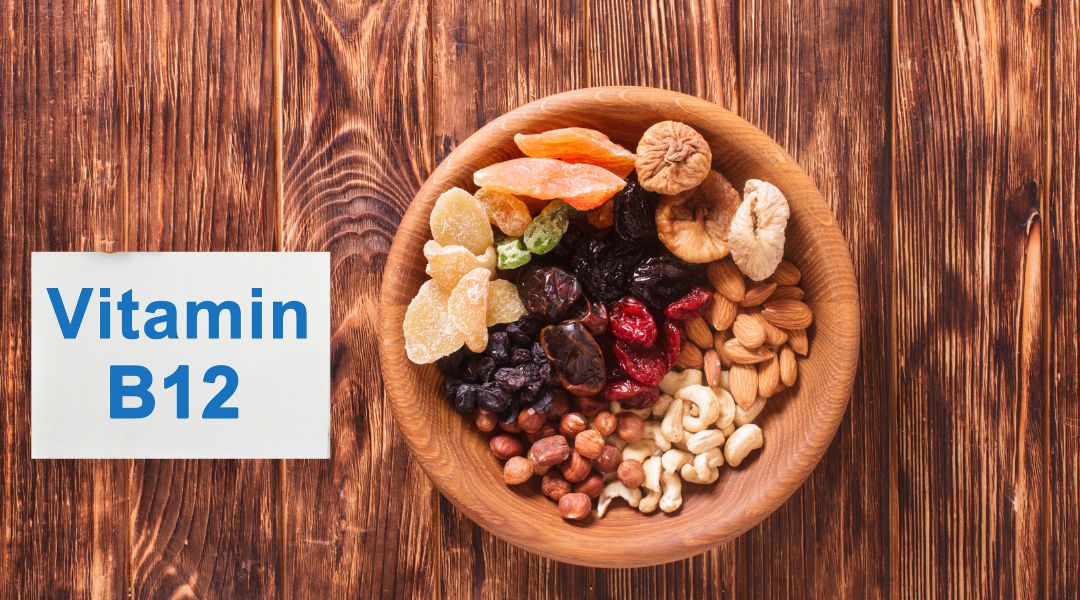Introduction
Welcome to the world of lulo fruit, a tropical delight bursting with flavor and nutritional benefits. In this article, we will explore origins, unique characteristics, health benefits, culinary uses, and much more. Get ready to discover the wonders of lulos fruit!
What is Lulo Fruit?

Lulos fruit, scientifically known as Solanum quitoense, is a small, citrus-like fruit native to the Andean region of South America. It is also commonly referred to as “naranjilla” or “little orange” due to its resemblance to an orange in shape and size. Lulos fruit belongs to nightshade family and is closely related to tomatoes and eggplants.
Origins and Cultivation
Lulos fruit has a long history that dates back to pre-Columbian times. It was originally cultivated by the indigenous people of Andean region, who recognized its unique taste and medicinal properties. Today, fruit is primarily grown in Colombia, Ecuador, and parts of Central America. The fruit thrives in subtropical and tropical climates, requiring warm temperatures and high humidity for optimal growth.
Nutritional Value of Lulos Fruit
Lulos isn’t only succulent but also packed with essential nutrients. It’s rich in vitamin C, which helps boost vulnerable system and promote healthy skin. Also, fruit contains significant quantities of vitamins A and B- complex, potassium, and iron. This combination of vitamins and minerals makes lulos a nutritional addition to any diet.
Unique Characteristics
Lulos fruit is easily recognizable by its vibrant green color and distinctive shape. It is approximately the size of a tennis ball and has a round or oval shape with a bumpy outer skin. The skin is covered in small hairs, giving it a slightly fuzzy texture. When ripe, skin turns yellowish-orange, and fruit becomes soft to touch.
Health Benefits of Lulo Fruit 2024

There are the following health benefits of lulo fruit:
a) Boosts Immune System
Lulos is a rich source of vitamin C, which plays a vital role in strengthening the immune system. Consuming lulos regularly may help ward off illnesses and infections, keeping you healthy and vibrant.
b) Supports Digestive Health
The fiber content in promotes healthy digestion and helps prevent constipation. Including in your diet can contribute to a well-functioning digestive system.
c) Hydrates the Body
With its high water content, is an excellent fruit for maintaining hydration. It can be particularly refreshing during hot summer months or after physical activity.
d) Provides Antioxidant Protection
Lulos contains antioxidants that help neutralize harmful free radicals in the body, reducing risk of chronic diseases and supporting overall well-being.
Culinary Uses of Lulos Fruit
Lulos fruit is incredibly protean in kitchen. Its pungent and citrusy flavor makes it a popular component in potables, logjams, jellies, and goodies. The fruit can be juiced to make stimulating potables or used as a base for amalgamations. pulp can be added to smoothies or used as a beating for ice cream and yogurt. Also, juice and tang of fruit can be used to add a unique twist to salad dressings and gravies.
Lulo Fruit in Traditional Medicine
In traditional medicine, fruit has been used for centuries to treat various ailments. It is believed to have anti-inflammatory properties and can be used to alleviate symptoms of arthritis and gastrointestinal issues. The fruit’s high vitamin C content also makes it a natural remedy for boosting the immune system and fighting off common colds and flu.
Lulo Fruit Recipes of 2024
There are the following lulos fruit recipes:
Lulos Fruit Smoothie:

- Ingredients:
2 ripe lulo fruits
1 banana
1 cup of coconut water
Honey or sweetener (optional)
- Instructions:
Peel lulos fruits and remove the seeds.
Combine fruit pulp, banana, and coconut water in a blender.
Blend until smooth.
Add honey or sweetener if desired.
Serve chilled and enjoy!
Lulos Fruit Salsa:

- Ingredients:
4 ripe lulos fruits
1 red bell pepper, diced
1 small red onion, finely chopped
Fresh cilantro, chopped
Lime juice
Salt and pepper to taste - Instructions:
Peel lulos fruits and dice flesh.
In a bowl, combine diced fruits, red bell pepper, red onion, and cilantro.
Squeeze lime juice over the mixture and season with salt and pepper.
Mix well and let flavors blend for at least 30 minutes.
Serve as a topping for grilled fish, chicken, or tacos.
Growing Lulo Fruit at Home
Still, you can try growing lulos fruit in your own vicinity, If you are fortunate enough to live in a suitable climate. The fruit can be grown from seeds or propagated from slices. It requires well- drained soil, regular watering, and plenitude of sun. With proper care and tolerance, you can enjoy succulent taste of homegrown fruit.
Availability and Where to Buy
Lulos fruit is readily available in regions where it is cultivated, such as Colombia, Ecuador, and some parts of Central America. In these areas, you can find fresh fruit at local markets or supermarkets. For those residing outside these regions, lulos fruit products, such as juices and preserves, may be available in specialty stores or online retailers.
Fun Facts About Lulo Fruit
- Lulo fruit is sometimes referred to as the “juice orange” due to its popularity in beverage industry.
- The fruit is often used as a natural flavoring agent in ice creams and sorbets.
- Lulo fruit is considered a “superfruit” due to its high nutritional value and health benefits.
- In Ecuador, fruit is a key ingredient in a traditional drink called “batido de naranjilla,” which is enjoyed during celebrations and festivals.
How To Store Lulo Fruit
Here are the best storage techniques for lulos and their expected shelf life:
| On the counter | If your lulos are unripe, store them at room temperature, away from direct sunlight. This will allow them to ripen gradually. They should last for about 3-5 days. |
| In the fridge | Once lulos are ripe, you can store them in the refrigerator to extend their shelf life. Place them in a perforated plastic bag or container to allow for air circulation. Ripe can last 7-10 days when stored in fridge. |
| Frozen | To freeze lulos, first wash and dry them. Cut the fruit into halves or quarters, and remove seeds. Place fruit pieces on a baking sheet lined with parchment paper, and freeze them until solid. Once frozen, transfer them to an airtight container or plastic freezer bag. Frozen can last for up to 12 months. |
Sustainability and Environmental Impact
Lulo fruit cultivation generally has a low environmental impact. The plant requires minimal pesticide use and can be grown using organic farming practices. However, as demand for lulos fruit increases, it is essential to ensure sustainable farming methods to protect local ecosystems and biodiversity.
Conclusion
In conclusion, lulo fruit is a tropical treasure that captivates with its tangy flavor, vibrant appearance, and numerous health benefits. Whether you’re sipping on a refreshing lulo smoothie or indulging in a zesty salsa, this fruit is sure to add a delightful twist to your culinary adventures. With its rich history, versatility, and sustainability, fruit deserves a special place in your tropical fruit repertoire. So, go ahead, embrace the exotic allure of fruit and embark on a tropical taste adventure like no other.







